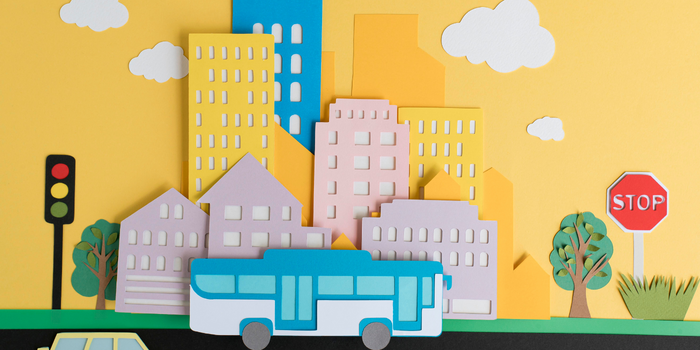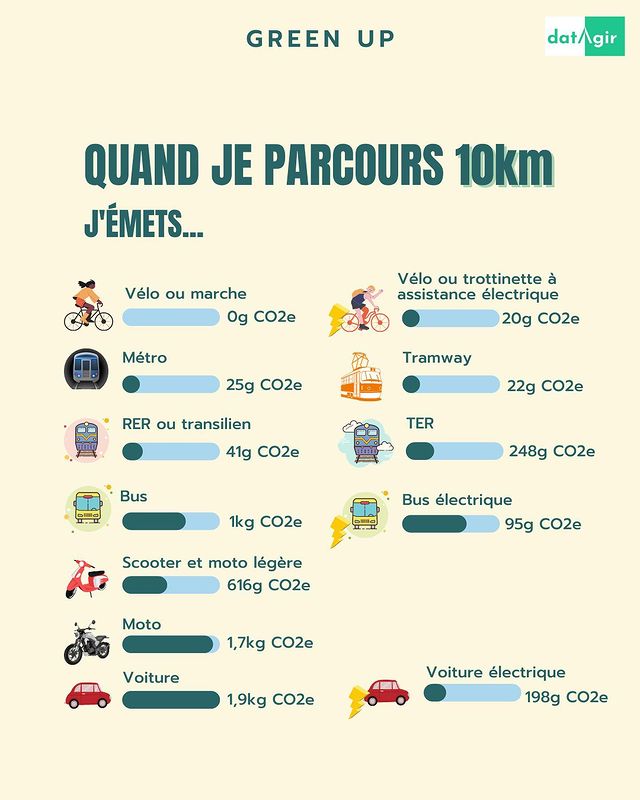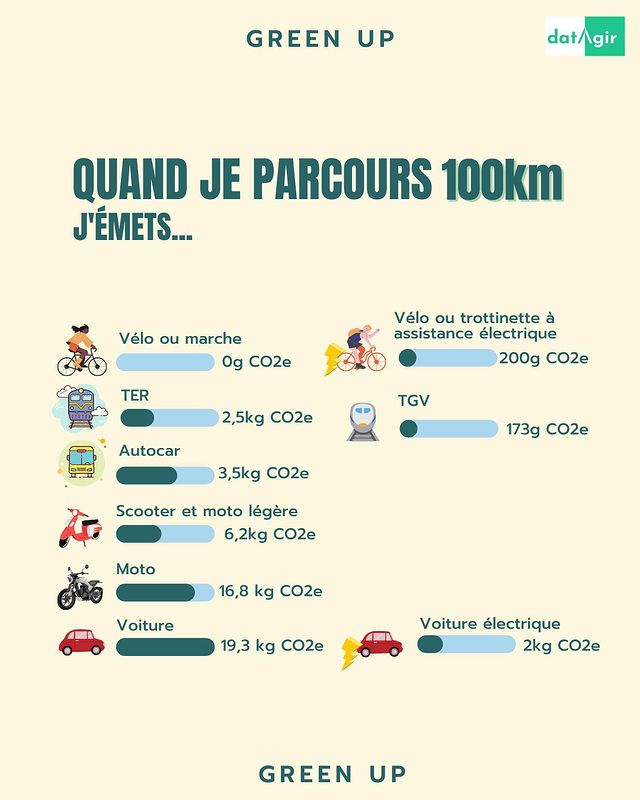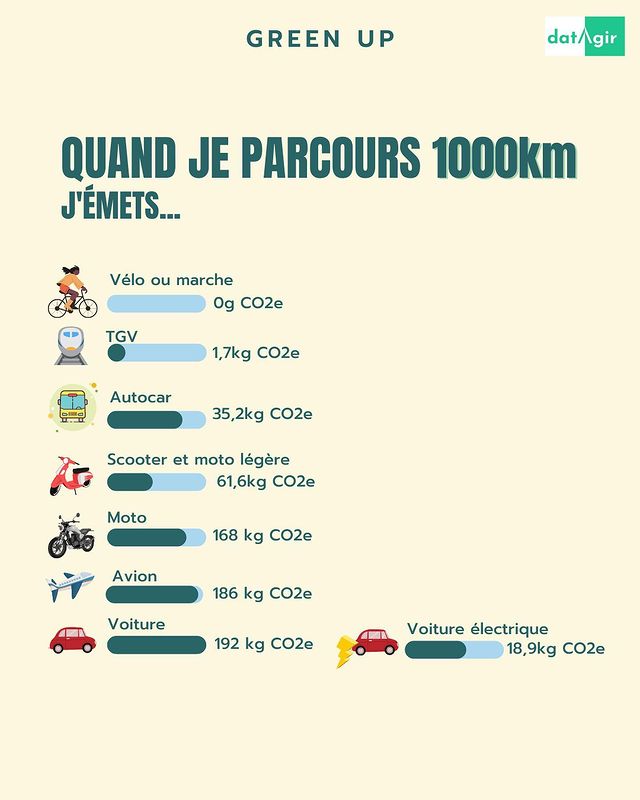
In France, transport is the most polluting sector, ahead of agriculture and construction. Indeed, it accounts for about a third of our country's greenhouse gas (GHG) emissions, i.e. about 136 million tonnes of CO2 each year according to the Secten 2020 report by CITEPA (Centre Interprofessionnel Technique d'Etudes de la Pollution Atmosphérique).
Are these numbers making your head spin?
Thanks to Nina, founder of Green Up, for these great infographics! Green Up is a committed and independent media to reconnect with nature, take time, become aware and act for the environment.
A tour of the carbon footprint of the main means of transport
-
The plane ✈️
The aviation sector accounts for 3 % of transport GHGs. However, this result only takes into account internal journeys within our country. If international journeys to and from France are taken into account, air traffic accounts for almost 14 % of these emissions. According to a study published in Nature Climate ChangeCarbon dioxide emissions account for only a third of an aircraft's impact on the environment. In fact, the white trails of high-altitude aircraft also emit other gases that contribute to climate change, making aircraft one of the most polluting modes of transport.
Some airlines offer to compensate for journeys. Good idea or greenwashing? Investing in an environmental project (e.g. planting trees) does not in any way cancel out the pollution generated by air travel. It just eases the passengers' conscience a little. There is a time lag between the duration of a plane trip, which is immediate pollution, and the growth of a tree over several years. Forests cannot store an unlimited amount of carbon dioxide. Also, the life of a tree can be affected by several hazards (disease, fire, etc.).
-
The car 🚗
It is the mode of transport most used by the French and accounts for half of the transport sector's GHGs. Half of all journeys made by car are less than 5 km long. 4 out of 10 French people who make a home-to-work journey of less than 1 km do so by car. By way of comparison, the same journey can be made in 10 minutes on foot or in about 4 minutes by bicycle.
Thermal car or electric car? The electric car is promoted by many advertising campaigns, but it is not really that clean. The manufacture of an electric car emits almost twice as much CO2 as that of a combustion engine car. Water and soil pollution is at least doubled due to the extraction of metals for the manufacture of the battery. The carbon impact also depends on the energy used to charge it (nuclear, coal, shale gas, etc.). There is also the question of its hypothetical recycling when it reaches the end of its life cycle. Unfortunately, there is no such thing as a 'green' car. If we focus only on use and not on manufacture: the electric car has less impact than the thermal car, in France, because of our energy mix
-
The train 🚆
Among the good performers, rail is one of the most environmentally friendly modes of transport (in France, however). Rail traffic accounts for less than 1 % of the transport sector's GHGs. By way of comparison, a trip from Paris to Toulouse by plane is 50 times more polluting than the same trip by train.
However, each type of train has a different impact. On average, a TER pollutes more than a TGV, but still much less than a car. Indeed, some TER lines are not yet electrified and run on diesel.
-
The bike 🚴♀️
It is unequivocally the least impactful mode of transport (along with walking for short distances). There is no need for fuel or electricity, as the energy comes exclusively from the cyclist, at least for the conventional bicycle. Good for your health and for the planet!
As for the electric bicycle, like the electric car, the carbon impact comes mainly from the manufacture of the battery and the source of the electricity to recharge it.
Thus, because of the way it is produced, the electric bicycle is twice as polluting as the traditional bicycle. Of course, it remains a good alternative to the car.
The same problem exists with electric scooters. Moreover, self-service scooters have an average life of one month, when they do not end up in the water, causing environmental and health pollution.
Other impacts
In addition to the problems of manufacturing and using a mode of transport, other actions had to be taken beforehand. In order to build roads, runways and railway lines, it was necessary to deforest, destroy fields, build concrete, etc., and thus to artificialise the landscape.
Want to go further?
The site my carbon impact allows, for a given number of kilometres, to calculate the carbon footprint of each means of transport. For long journeys, don't forget to display the impact of the drags for the plane.

This article was written by CarolineIts motto is "be the change you want to see in the world".
MPP THEMES
The next themes

FOLLOW US
BACK TO THE SITE
CONTACT US
MPP COMPANY
mathilde@mapetiteplanete.org
SCHOOL PPM
chloe@mapetiteplanete.org
OTHER
clement@mapetiteplanete.org





